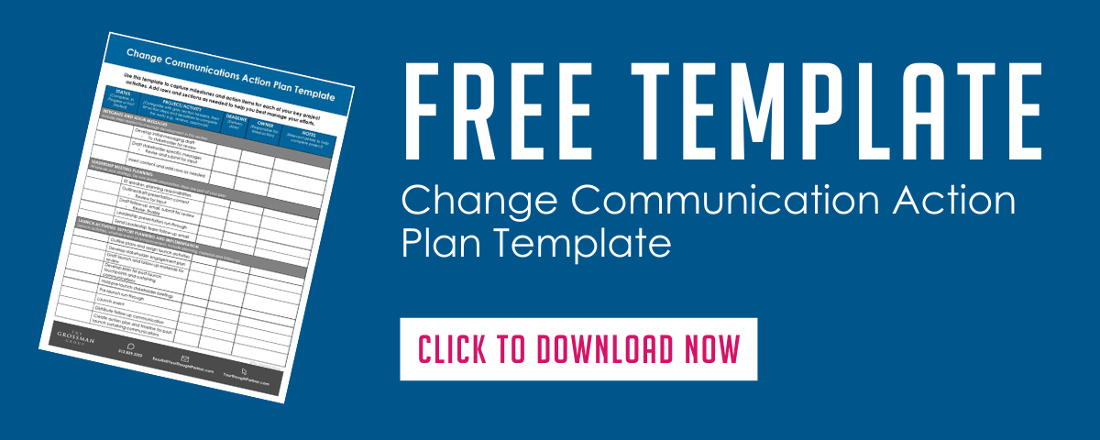
Every leader will at some point be responsible for leading their organization through change. And when that happens, it’s not uncommon to discover that the experience is far from business as usual.
Leading change requires different mindsets, skills and techniques than many leaders practice regularly. Responsibilities like managing budgets, milestones and metrics are only part of the process. It’s understanding and managing the people side of change that is the key to adopting and sustaining any change.
Leaders: Some Food for Thought as You Lead Change
Here is some guidance for leaders to increase their potential for successfully leading change:
1. Know what it means to lead change
- Helping people through change is equally as important as, but different from, the strategic or logistical (project) sides of change
- The “people” side of change involves closely monitoring employees’ attitudes and needs and ensuring they get the information and support they need
- Evangelizing the vision and “why” for the change, using consistent messages and interpreting them for employees at all levels of the organization
- Motivating people to adopt a change, which starts with being clear on what’s changing and why, what the change means to their work, and what they need to do differently—all of this comes from their leaders
- Listening, including gathering and responding to employees’ input, addressing their concerns and acknowledging their challenges, is a critical part of leading change
- Thoughtful planning that includes people who are impacted by the proposed change – in addition to experts in project management, change management, learning & development, and communication – will lead to a better outcome
- A team effort involving multiple levels of leaders:
- Executive sponsor who can share the vision, rationale and commitment to the change
- Senior leaders who reinforce the importance of the change and set expectations for their teams to support it
- Managers and supervisors who help interpret what the change means to their teams, model desired behaviors, lead dialogue and respond to their teams’ concerns
- Change agents who serve as peer leaders and early adopters – who communicate, listen, share feedback with leadership, and demonstrate the desired ways of working
- Modeling, not delegating. People want consistent evidence of leader support at all levels – from the original decision through the change process and afterward
2. Do what it takes to achieve adoption and sustain the change
- Understand and consider all the stakeholders who might be affected, what they need and what the change means to them (as functions, teams and individuals)
- Work closely with communications to formulate messages, create effective materials, respond to employee input and share the vision across the organization
- Be a visible champion of the change, accountable for evangelizing the vision, aligning leaders, and informing managers, supervisors and employees at all levels
- Equip and engage leaders at all levels to support the change from the time decisions are made, and maintain their engagement through the planning, milestones, and project completion to help sustain the new ways of working
- Purposefully engage with employees at all levels to provide information they are seeking and understand and respond appropriately to their needs
3. Set expectations and hold people accountable
- Communicate, communicate, communicate with a cadence of consistent information delivered by leaders at division, function, and team levels in addition to all-employee channels
- Be clear on what you want to see from your team, especially if there are new behaviors they are expected to adopt, repeat your expectations frequently and acknowledge those who are demonstrating them
- Lead by example, including participating in training and adopting unfamiliar behaviors and processes, to show your commitment and understanding of what people are going through
- Stay tuned to your team with regular check-ins, conversations and listening sessions to understand their challenges, address questions as they arise and help people feel heard
- Recognize what’s working well and address what’s not, even if it’s to empathize with the challenge of dealing with uncertainty and assuring employees that you’ll share updates as soon as they are available
Which of these ideas will you try to help you lead change in your organization?
—David Grossman
Help drive change in your organization with an action plan using this free, easy-to-use and editable Change Communication Action Plan Template – click below to download today!
Other posts you might be interested in
View All Posts
Internal Communication
5 min read |
June 13, 2022
3 Unique Ways Leaders Can Prioritize During Change
Read More
Leadership Communication
4 min read |
June 28, 2021
Get a Sneak Peek of My New Book - Heart First: Lasting Leader Lessons from a Year that Changed Everything
Read More
Leadership Communication
4 min read |
December 13, 2021


Comments on this post